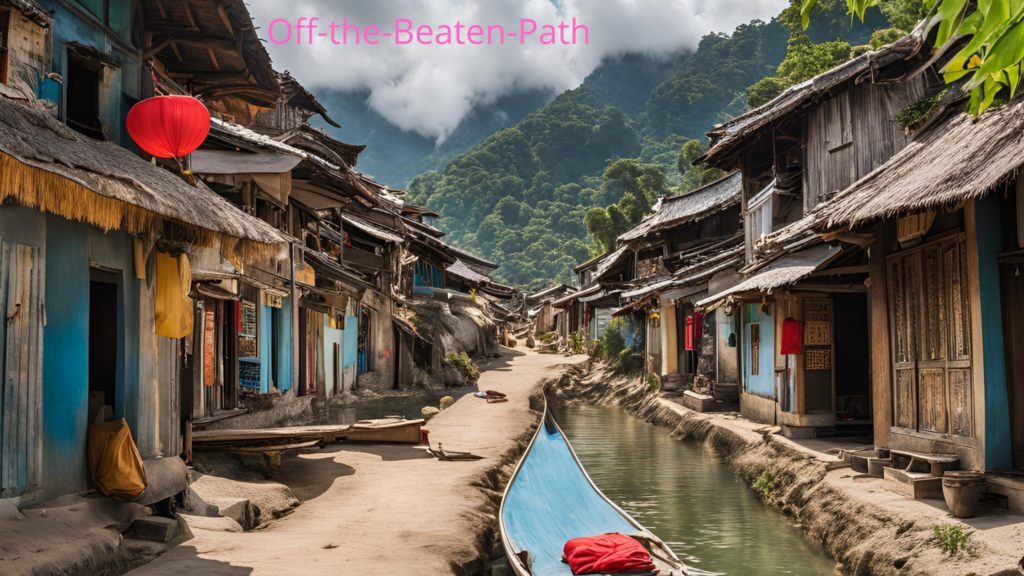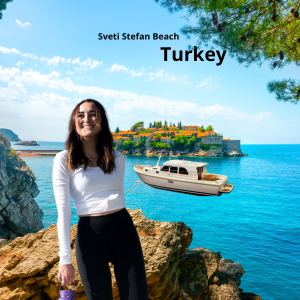Travel experience In Georgia, Albania, Mongolia
Traveling off the beaten path is more than just avoiding tourist hotspots—it’s about immersing yourself in the soul of a place. Stepping away from the usual tourist trails allows you to experience a destination in its truest form, offering a chance to connect with local cultures, traditions, and landscapes. Georgia, Albania, and Mongolia are three remarkable countries that remain largely undiscovered yet offer unparalleled beauty, vibrant traditions, and unforgettable experiences. Let’s delve deeper into the gems that make these destinations truly special.
Georgia: A Land of Mountains and Myths
Overview of Georgia’s Unique Charm
Nestled at the crossroads of Europe and Asia, Georgia is a captivating tapestry of rugged mountains, ancient traditions, and warm hospitality. This small yet diverse country offers breathtaking landscapes that range from the soaring peaks of the Caucasus Mountains to lush valleys adorned with vineyards. The Georgian people are known for their warmth and generosity, often welcoming visitors with open arms and a shared meal.
- Tbilisi: A Blend of the Old and the New
Tbilisi, the capital city, captivates with its eclectic mix of medieval architecture, art nouveau facades, and modern glass skyscrapers. The city is a reflection of Georgia’s turbulent history, where various cultures and influences have merged to create a unique identity.
Wander through the Old Town’s winding alleys, where crumbling buildings coexist with contemporary art installations. Visit the stunning sulfur baths at Abanotubani, take a cable car to the Narikala Fortress for panoramic views, and enjoy the lively atmosphere of the many cafés and street vendors. Markets such as the Dezerter Bazaar offer an authentic taste of Georgian life, bursting with local produce and enticing aromas.
- Kazbegi: Alpine Beauty and Ancient Churches
Kazbegi is a haven for nature lovers and adventure seekers alike. Dominated by the majestic Mount Kazbek, this mountainous region is characterized by its stunning scenery and breathtaking hiking trails. The Gergeti Trinity Church, perched high on a hill, offers awe-inspiring views against a backdrop of snow-capped peaks, making it a perfect spot for photography and contemplation.
Hiking trails ranging from easy strolls to challenging treks lead you through picturesque villages and stunning landscapes. Along the way, stop to enjoy the local hospitality with home-cooked meals offered in family-run guesthouses, capturing the essence of Georgian mountain life.
- Svaneti: Mystical Towers and Untouched Landscapes
Remote and enigmatic, Svaneti is one of Georgia’s most captivating regions. It is home to the Svan people, known for their distinct culture and unique architectural style. Towering mountains and defensive stone towers dot the landscape, creating a hauntingly beautiful setting. The isolation of this region has preserved its ancient traditions, making it a living museum of Georgian history.
Visitors can trek to villages like Ushguli, which is one of the highest inhabited villages in Europe, where time seems to stand still. Explore the ethereal beauty of glaciers, wildflower-strewn meadows, and centuries-old churches. Svan cuisine, featuring hearty dishes like kubdari (meat pie) and lashari (wild herbs), will delight your taste buds after a long day of hiking.
- Kakheti: The Cradle of Wine-Making
Georgia’s Kakheti region is a wine lover’s paradise. With a winemaking tradition extending back over 8,000 years, you can savor amber-hued qvevri wines while exploring picturesque vineyards set against the backdrop of the Caucasus Mountains. The unique qvevri method—where wine ferments in buried clay vessels—gives Georgian wines their distinctive flavors.
Visiting a local vineyard allows you to learn about traditional winemaking practices, sample various wines, and enjoy traditional Georgian feasts known as supra, complete with toasts led by a “tamada” (toastmaster). The warm ambiance and rich flavors make Kakheti a memorable experience for anyone seeking to understand the heart of Georgian culture.
- Georgian Cuisine: A Feast of Flavors
Georgian cuisine is a feast for the senses, with an array of flavors and distinctive dishes that reflect the country’s diverse geography. Must-try items include:
- Khinkali: Juicy dumplings filled with spiced meats and herbs, served with a sprinkling of black pepper.
- Khachapuri: A delightful cheese-filled bread, often shaped like a boat and topped with an egg and butter.
- Churchkhela: A sweet treat made of nuts threaded on a string, dipped in grape juice, and dried in the sun.
Dining is an essential aspect of Georgian culture, often served family-style and enjoyed with local wines, creating a convivial atmosphere that fosters meaningful connections.
Albania: The Hidden Jewel of the Balkans
Introduction to Albania’s Allure
Albania is a land of striking contrasts, where ancient ruins meet unspoiled nature, and vibrant cities pulse with life. Despite its stunning landscapes and rich history, Albania remains one of Europe’s best-kept secrets, largely untouched by mass tourism. This charming country offers visitors an array of experiences, from the idyllic Albanian Riviera to the dramatic peaks of the Albanian Alps.
- Tirana: A City of Colorful Transformation
Once a gray, communist-era city, Tirana has undergone a vibrant transformation into a hub of creativity and modernity. The capital’s brightly painted buildings, street art, and lively cafes make it a joy to explore. A stroll through the main square, Skanderbeg Square, leads you to key attractions like the National History Museum and the Et’hem Bey Mosque, which showcase parts of the country’s complex history.
Tirana also features a burgeoning café culture, where you can sip strong Albanian coffee while mingling with locals. The city’s lively markets, such as Pazari i Ri (New Bazaar), offer a colorful glimpse into daily life and the chance to sample regional specialties, including fresh produce, cured meats, and handmade cheeses.
- The Albanian Riviera: Pristine Beaches and Azure Waters
The Albanian Riviera rivals its Mediterranean counterparts with its stunningly beautiful coastal scenery, crystal-clear waters, and secluded beaches. Charming villages like Himara, Dhërmi, and Jale Beach provide opportunities for relaxation, sunbathing, and water sports. Beaches such as Gjipe, accessible only by hiking or boat, offer an escape into stunning natural beauty away from the crowds.
The scenic coastline is dotted with hidden coves and rocky cliffs, perfect for swimming, snorkeling, and enjoying fresh seafood at beachside taverns. As the sun sets, the vibrant nightlife springs to life in beach bars and clubs, inviting you to dance the night away under the stars.
- Berat: The City of a Thousand Windows
Berat, a UNESCO World Heritage site, enchants visitors with its Ottoman-era houses that cling to the hillsides, creating a mesmerizing effect of countless windows looking out over the Osum River. This “City of a Thousand Windows” is steeped in history and offers a glimpse into Albania’s architectural past.
Exploring Berat’s cobbled streets and charming neighborhoods, like Mangalem and Gorica, reveals ancient churches, mosques, and the historic Berat Castle, where stunning views await. The Onufri National Museum, located within the castle, showcases religious icons and artifacts, highlighting the significance of the Orthodox Church in the region.
- Theth National Park: A Hiker’s Paradise
For outdoor enthusiasts, Theth National Park is a must-visit destination. This stunning park is characterized by dramatic landscapes of rugged peaks, emerald valleys, and gushing waterfalls, making it one of Albania’s most beautiful natural areas. The breathtaking scenery, including the iconic Grunas Waterfall and the Blue Eye, is complemented by untouched wilderness and traditional stone houses.
Hiking trails connect charming villages, allowing travelers to experience the unspoiled beauty of the Albanian Alps. Be sure to try the local cuisine at guesthouses along the way, including hearty meals of lamb or goat, accompanied by freshly baked bread and local cheeses.
Albanian Culinary Treasures
Albanian cuisine reflects the country’s rich history and the influence of Mediterranean flavors with a twist. Must-try dishes include:
- Byrek: Savory pastries filled with cheese, spinach, or meat; a staple snack enjoyed throughout the country.
- Tavë Kosi: A traditionally baked dish made of lamb and yogurt, offering a delightful blend of flavors that encapsulates Albanian heritage.
- Fërgesë: A dish made from peppers, tomatoes, and cheese, bringing together fresh ingredients in a hearty stew.
Dining in Albania is often a communal experience, with generous portions and a focus on joyous gatherings. Every meal is a celebration, and home-cooked dishes not only satisfy hunger but also allow for deeper connection with local communities.
Mongolia: The Vast and Untamed Steppe
Overview of Mongolia’s Rugged Beauty
Mongolia is a land of vast steppes, rolling hills, and a nomadic culture that creates an enchanting sense of freedom and timelessness. The breathtaking landscapes play host to diverse wildlife, including wild horses, gazelles, and various bird species, making it a paradise for nature lovers and adventure seekers.
Ulaanbaatar: Tradition Meets Modernity
Ulaanbaatar, the capital city, is a fascinating contrast of tradition and modernity. Here, ancient monasteries like Gandan Khiid stand alongside contemporary cafés and buzzing markets. The juxtaposition of traditional and modern life reflects Mongolia’s rapid growth while honoring its rich heritage.
Exploring the city offers insights into daily Mongolian life, from the bustling Naran Tuul Market, where everything from traditional clothing to local products can be found, to the State Department Store, showcasing contemporary Mongolian handicrafts. Visitors can learn about the country’s history at the National Museum of Mongolia, which highlights the journey from ancient nomadic tribes through Soviet influence to contemporary Mongolia.
Gobi Desert: Endless Dunes and Nomadic Culture
The Gobi Desert, with its stark beauty and surreal landscapes, is a must-visit for any traveler venturing into Mongolia. Characterized by endless sand dunes, salt flats, and rocky mountains, the Gobi is home to unique ecosystems and a fascinating nomadic culture. Visitors can experience the stark contrast of the arid desert and the vibrant lives of those who call it home.
To truly immerse yourself in the nomadic lifestyle, spend nights in a ger (traditional felt tent) and enjoy the warmth of fireside storytelling. Engaging with local herders allows you to learn about their traditions, and sharing a meal—a hearty soup or freshly baked bread—offers a glimpse into their way of life.
One of the highlights of a Gobi Desert expedition is the opportunity to visit sites such as the Flaming Cliffs, known for their paleontological finds, including dinosaur eggs and fossils. The vastness of the landscape and the starry nights create a dreamlike experience, making it a memorable aspect of any Mongolian adventure.
Lake Khövsgöl: Mongolia’s Blue Pearl
Lake Khövsgöl is often referred to as Mongolia’s Blue Pearl, and for good reason. This stunning freshwater lake lies nestled among pristine forests and snow-capped mountains, boasting some of the cleanest waters in the world. The area surrounding the lake is rich in biodiversity, home to many bird species and rare animals.
Outdoor enthusiasts will find plenty of activities to engage in, including kayaking, fishing, horseback riding, and hiking the surrounding trails. The lakeside scenery is breathtaking, with options for camping or staying in local guesthouses to experience the hospitality of the nomads who reside around the lake.
A visit to Lake Khövsgöl also offers the chance to explore local culture, with opportunities to participate in traditional rituals and festivals celebrated by the indigenous Tsaatan people, known for their reindeer herding lifestyle.
Orkhon Valley: The Heart of Mongolia’s History
The Orkhon Valley is a UNESCO World Heritage site, widely regarded as the cradle of Mongolian civilization. This expansive valley is steeped in history and is dotted with ancient ruins, monasteries, and the remnants of historical sites tracing back to the Mongol Empire.
Visitors can explore landmarks such as the ruins of Karakorum, the ancient capital of Mongolia founded by Genghis Khan, and the Erdene Zuu Monastery, one of the first Buddhist monasteries built in the country. The valley’s sweeping grasslands provide a backdrop for connecting with Mongolia’s rich past and understanding its significance in shaping the nation’s identity.
The Orkhon Valley’s landscapes are equally captivating, with lush meadows, flowing rivers, and picturesque waterfalls making it a popular backdrop for leisure activities. Horse riding remains a beloved pastime, allowing visitors to traverse the stunning terrain while experiencing the age-old traditions of Mongolian horsemanship.
Mongolian Cuisine: Hearty Dishes for the Adventurous
Food in Mongolia is characterized by its hearty and meat-centric dishes, perfect for fueling the energy needed to navigate its rugged landscapes. Here are a few must-try dishes:
- Buuz: Steamed dumplings typically filled with minced meat, often enjoyed during festivals or family gatherings.
- Khorkhog: A traditional dish where meat is cooked inside a ger using hot stones, resulting in a savory and aromatic meal.
- Airag: Fermented mare’s milk, a central beverage in Mongolian culture that has been consumed for centuries, offering a unique and tangy taste experience.
Dining is often communal in Mongolia, with meals shared among family and friends. Traditional meals usually include a variety of dishes and are often accompanied by toasts and songs, creating a vibrant atmosphere of unity and celebration.
Practical Tips for Visiting Georgia, Albania, and Mongolia
How to Get There
Reaching these lesser-known destinations may require a bit more planning compared to mainstream tourist spots, but it’s well worth the effort. While direct flights may be limited, connections through major hubs such as Istanbul, Vienna, or Rome make these destinations accessible. It’s advisable to check visa requirements in advance, as both Georgia and Albania offer visa-free access to many nationalities, and Mongolia may require a visa depending on your nationality.
Best Times to Visit
Visiting during the spring (April to June) and autumn (September to October) months is ideal for Georgia and Albania, as the weather is pleasant and crowds are minimal. For Mongolia, summer (June to August) is the best time to enjoy milder temperatures and participate in vibrant festivals, such as the Naadam Festival, which celebrates the “Three Manly Games” of wrestling, horse racing, and archery.
Navigating Language and Cultural Nuances
While English is commonly spoken in tourist areas, learning a few basic phrases in Georgian, Albanian, or Mongolian will greatly enhance your travel experience. Engaging with locals in their language reveals mutual respect and fosters valuable connections. Pract icing cultural nuances is also essential; each country boasts unique customs, from Georgian toasts during meals to the warm greetings exchanged in Albanian culture. Understanding and respecting these traditions will enrich your experience and create deeper connections with the locals.
Sustainable Travel in Lesser-Known Destinations
Traveling responsibly and sustainably is imperative, especially in lesser-known destinations where the local economy can be sensitive to changes brought by tourism. Here are some practical ways to ensure your travel supports local communities while preserving these beautiful landscapes:
Supporting Local Communities
- Choose Locally Owned Accommodations: Opt for guesthouses, family-run hotels, or eco-lodges rather than large international hotel chains. This ensures that more of your money stays within the community and directly benefits local families.
- Hire Local Guides: Engage local guides who possess in-depth knowledge about the culture, history, and environment. Their insights will provide a richer understanding of the destinations and support sustainable tourism practices.
- Eat at Local Restaurants: Dine at family-owned restaurants and try local dishes. This not only enhances your culinary experience but also supports local economies.
- Buy Handmade Goods: Purchase artisanal crafts from local markets or directly from artisans. This not only encourages traditional craftsmanship but also preserves cultural heritage.
Minimizing Environmental Impact
- Avoid Single-Use Plastics: Carry a reusable water bottle and bags to minimize your plastic footprint. Many Georgian, Albanian, and Mongolian regions lack adequate recycling facilities.
- Stick to Designated Trails: When hiking or exploring natural areas, always stay on marked paths. This protects delicate ecosystems and preserves the integrity of the landscapes for future visitors.
- Leave No Trace: Adhere to the “Leave No Trace” principles. Dispose of waste responsibly, take only photographs, and leave nature as you found it.
- Offset Your Carbon Footprint: Consider contributing to carbon offset programs to compensate for your travel emissions. Many organizations plant trees or invest in renewable energy projects to balance ecological footprints.
- Engage in Conservation Programs: Participate in local conservation initiatives, such as park clean-ups or wildlife monitoring programs, which allow travelers to contribute positively to the destinations.
Conclusion
Off-the-beaten-path destinations like Georgia, Albania, and Mongolia offer an escape from the ordinary, inviting you to discover the extraordinary. These countries, rich in natural beauty and culture, beckon the curious traveler with their untamed landscapes, ancient traditions, and warm hospitality. By embracing the road less traveled, you have the opportunity to create lasting memories and connections that transcend borders and cultures.
As you journey through the rugged mountains of Georgia, savor the culinary delights in Albania, or experience the vastness of Mongolia’s steppes, you open the door to enriching experiences that broaden your understanding of the world. These hidden gems are more than just places to visit; they are vibrant stories waiting to be told.
So pack your bags, step outside the mainstream, and let your adventures in these enchanting countries shape your travel narrative. The real magic happens when you embark on journeys that go beyond the expected, leading you to discover the heart and soul of diverse cultures around the globe. Embrace the beauty of exploration, immerse yourself in the cultures you encounter, and cherish the personal growth that accompanies every off-the-beaten-path journey.



